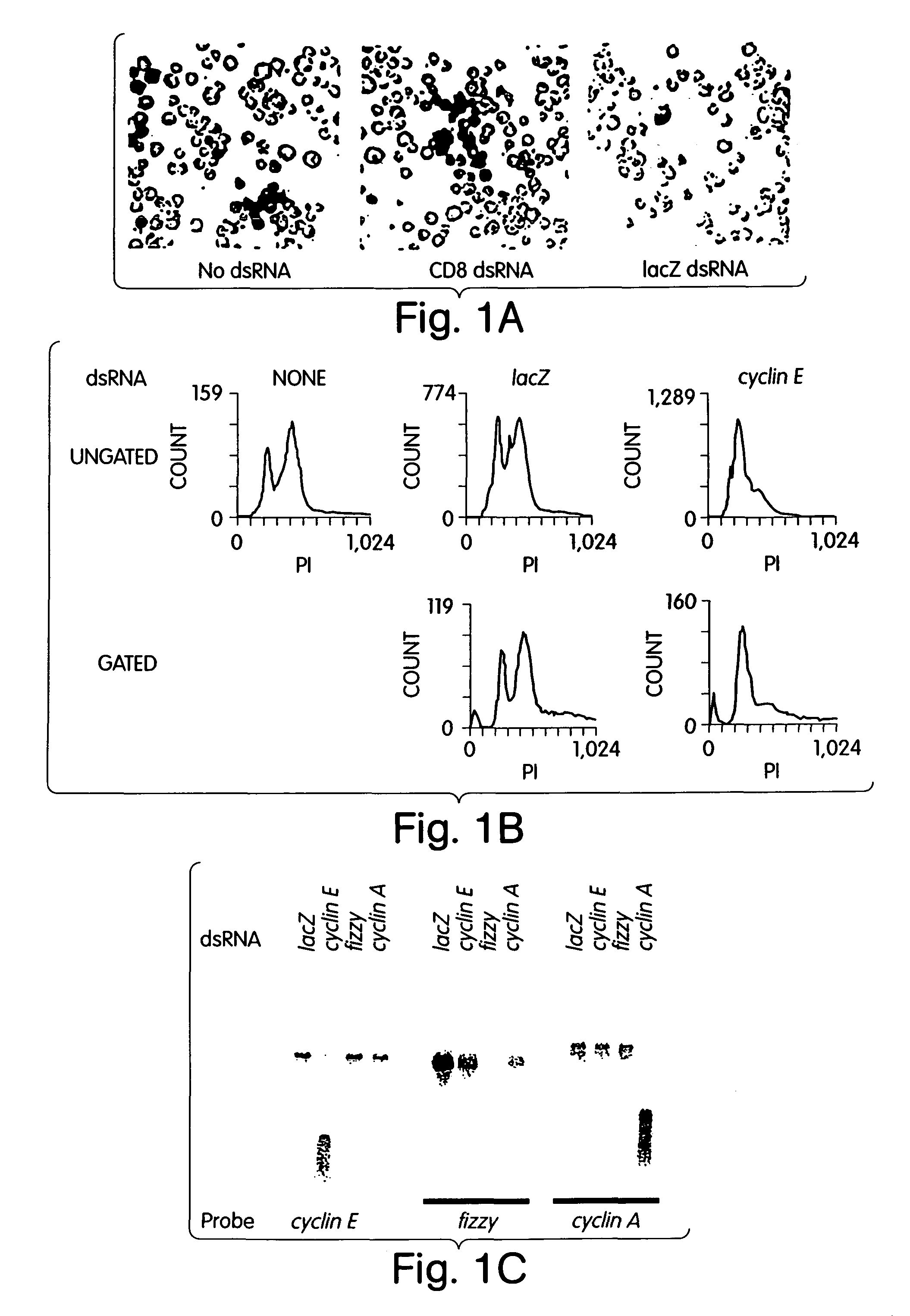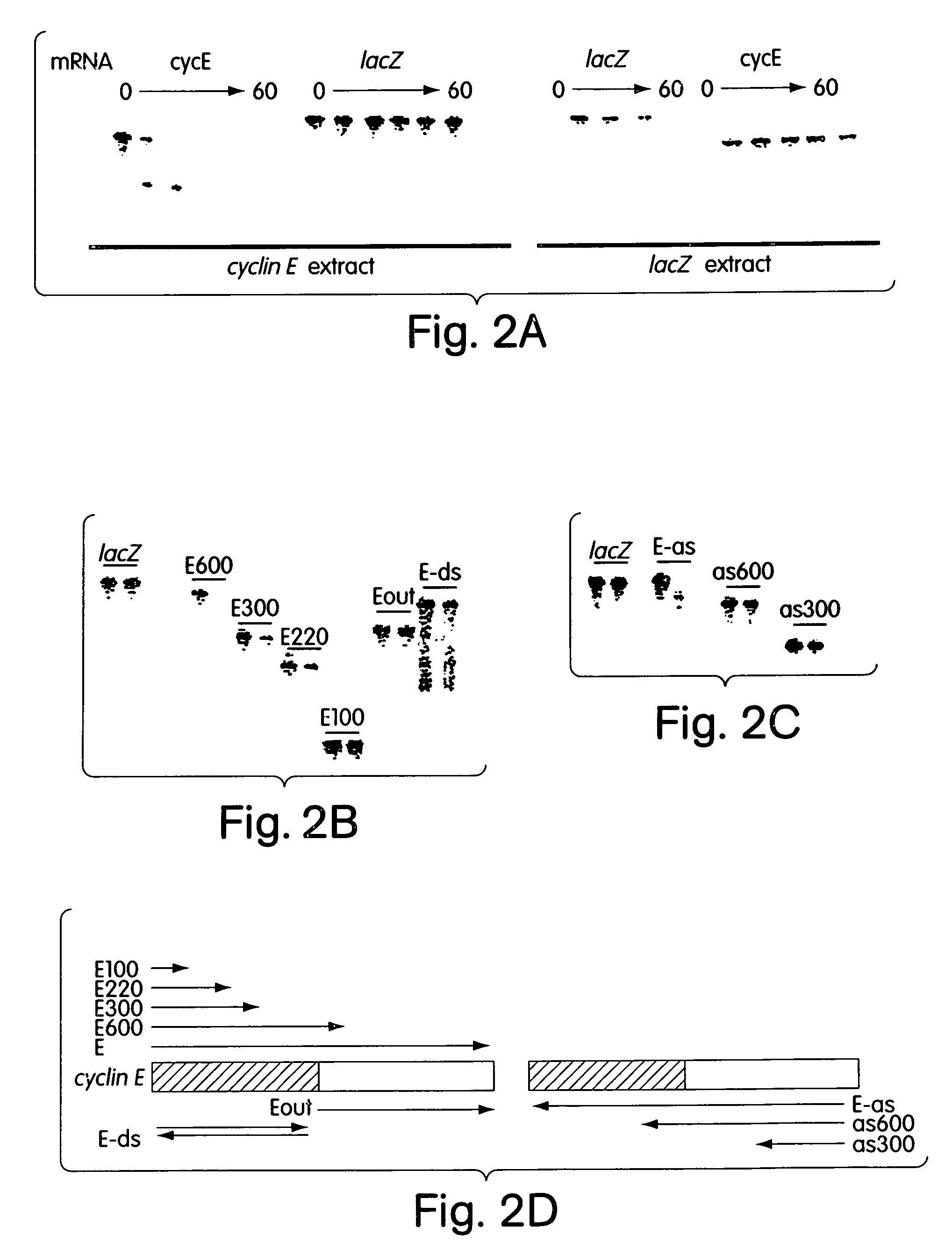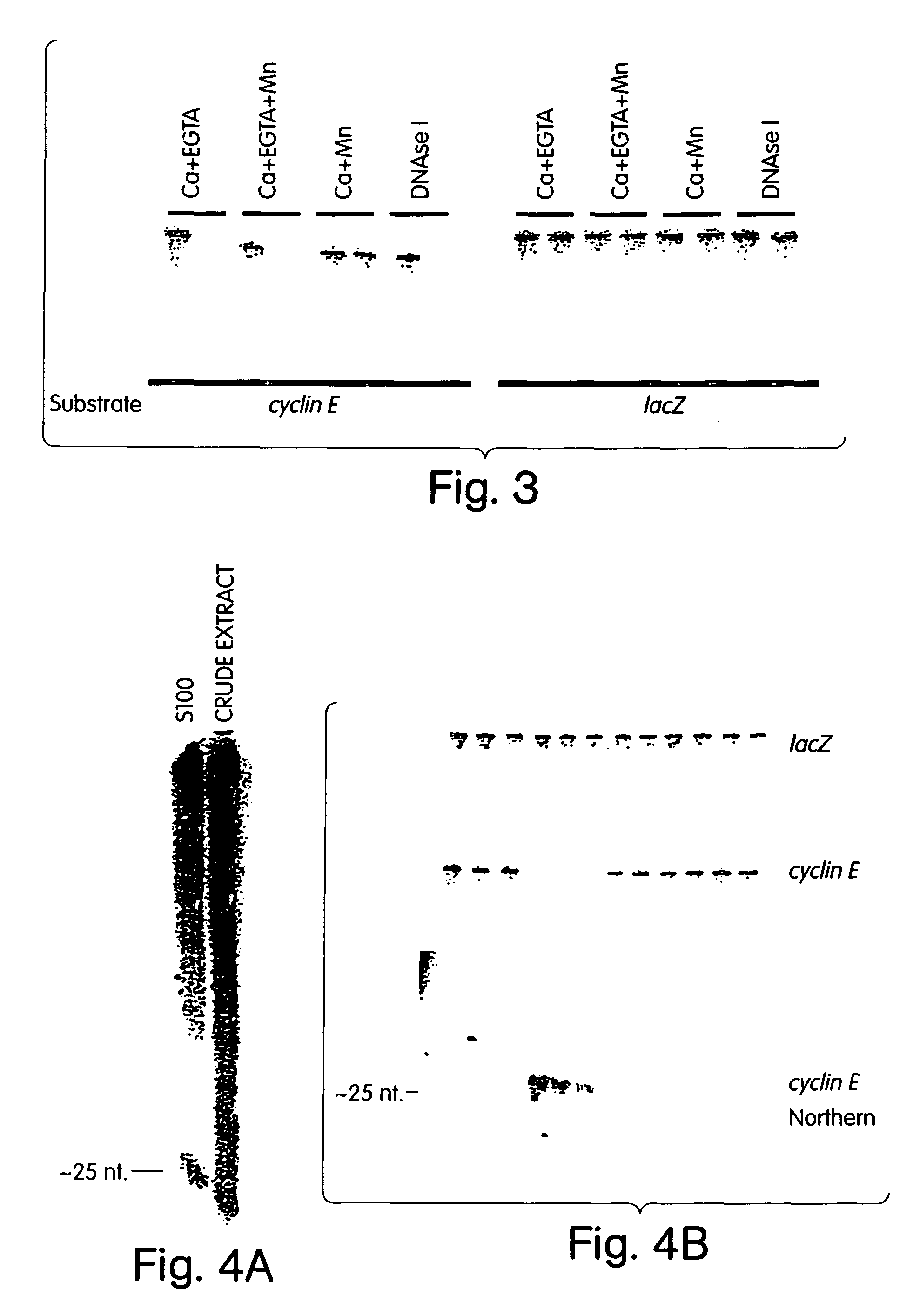Methods and compositions for RNA interference using recombinant Dicer and Argonaut
a technology of rna interference and composition, which is applied in the field of compositions for rna interference using recombinant dicer and argonaut, can solve the problems of inability to recapitulate this phenomenon in higher eukaryotes, particularly mammalian cells, and achieve the effect of more effective inhibition
- Summary
- Abstract
- Description
- Claims
- Application Information
AI Technical Summary
Benefits of technology
Problems solved by technology
Method used
Image
Examples
example 1
An RNA-Directed Nuclease Mediates RNAi Gene Silencing
[0147]In a diverse group of organisms that includes Caenorhabditis elegans, Drosophila, planaria, hydra, trypanosomes, fungi and plants, the introduction of double-stranded RNAs inhibits gene expression in a sequence-specific manner1-7. These responses, called RNA interference or post-transcriptional gene silencing, may provide anti-viral defence, modulate transposition or regulate gene expression1, 6, 8-10. We have taken a biochemical approach towards elucidating the mechanisms underlying this genetic phenomenon. Here we show that ‘loss-of-function’ phenotypes can be created in cultured Drosophila cells by transfection with specific double-stranded RNAs. This coincides with a marked reduction in the level of cognate cellular messenger RNAs. Extracts of transfected cells contain a nuclease activity that specifically degrades exogenous transcripts homologous to transfected double-stranded RNA. This enzyme contains an essential RNA ...
example 2
Role for a Bidentate Ribonuclease in the Initiation Step of RNA Interference
[0182]Genetic approaches in worms, fungi and plants have identified a group of proteins that are essential for double-stranded RNA-induced gene silencing. Among these are ARGONAUTE family members (e.g. RDE1, QDE2)9,10,30, recQ-family helicases (MUT-7, QDE3)11,12, and RNA-dependent RNA polymerases (e.g. EGO-1, QDE1, SGS2 / SDE1)13-16. While potential roles have been proposed, none of these genes has been assigned a definitive function in the silencing process. Biochemical studies have suggested that PTGS is accomplished by a multicomponent nuclease that targets mRNAs for degradations6,8,17. We have shown that the specificity of this complex may derive from the incorporation of a small guide sequence that is homologous to the mRNA substrate6. Originally identified in plants that were actively silencing transgenes7, these ˜22 nt. RNAs have been produced during RNAi in vitro using an extract prepared from Drosophi...
references cited example 2
[0200]1. Baulcombe, D. C. RNA as a target and an initiator of post-transcriptional gene silencing in transgenic plants. Plant Mol Biol 32, 79-88 (1996).[0201]2. Wassenegger, M. & Pelissier, T. A model for RNA-mediated gene silencing in higher plants. Plant Mol Biol 37, 349-62 (1998).[0202]3. Montgomery, M. K. & Fire, A. Double-stranded RNA as a mediator in sequence-specific genetic silencing and co-suppression [see comments]. Trends Genet 14, 255-8 (1998).[0203]4. Sharp, P. A. RNAi and double-strand RNA. Genes Dev 13, 139-41 (1999).[0204]5. Sijen, T. & Kooter, J. M. Post-transcriptional gene-silencing: RNAs on the attack or on the defense? [In Process Citation]. Bioessays 22, 520-31 (2000).[0205]6. Hammond, S. M., Bernstein, E., Beach, D. & Hannon, G. J. An RNA-directed nuclease mediates post-transcriptional gene silencing in Drosophila cells. Nature 404, 293-6 (2000).[0206]7. Hamilton, A. J. & Baulcombe, D. C. A species of small antisense RNA in posttranscriptional gene silencing i...
PUM
| Property | Measurement | Unit |
|---|---|---|
| pH | aaaaa | aaaaa |
| pH | aaaaa | aaaaa |
| pH | aaaaa | aaaaa |
Abstract
Description
Claims
Application Information
 Login to View More
Login to View More - R&D
- Intellectual Property
- Life Sciences
- Materials
- Tech Scout
- Unparalleled Data Quality
- Higher Quality Content
- 60% Fewer Hallucinations
Browse by: Latest US Patents, China's latest patents, Technical Efficacy Thesaurus, Application Domain, Technology Topic, Popular Technical Reports.
© 2025 PatSnap. All rights reserved.Legal|Privacy policy|Modern Slavery Act Transparency Statement|Sitemap|About US| Contact US: help@patsnap.com



